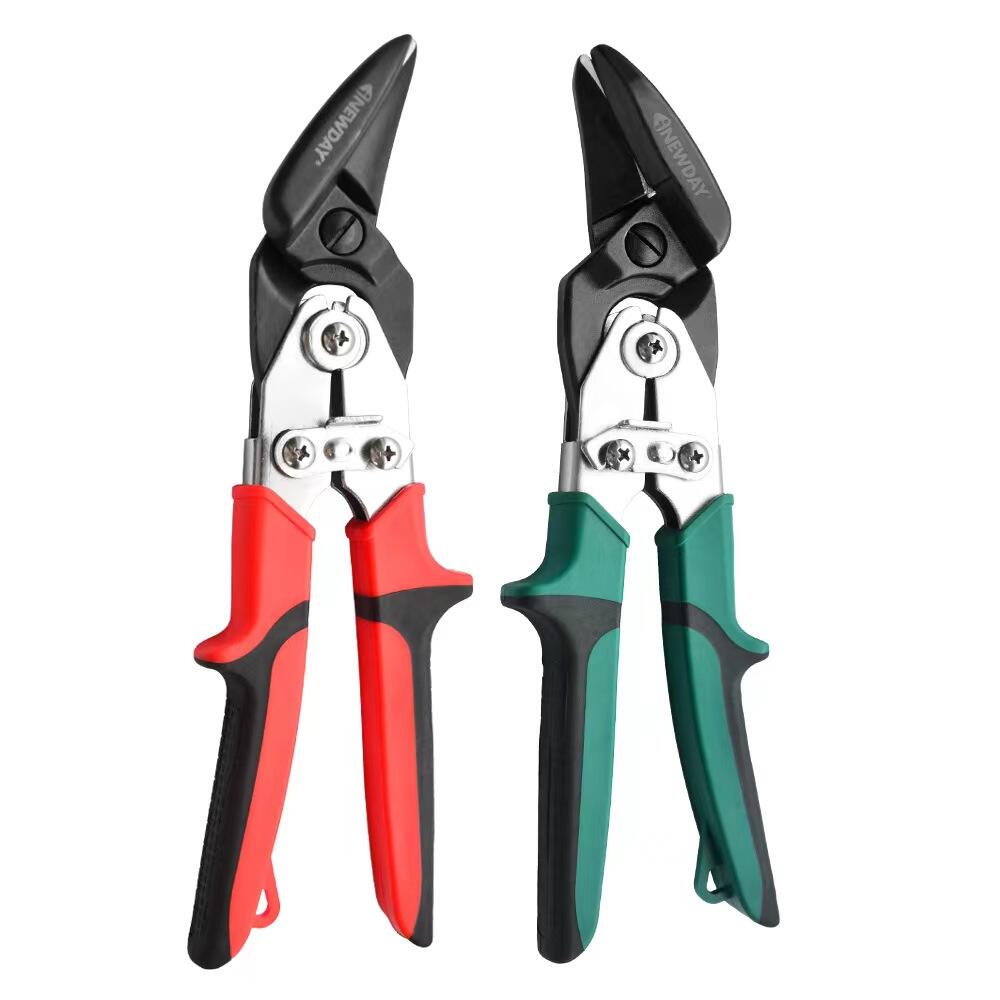red and green tin snips
The red and green tin snips are precision cutting tools designed for efficient and clean cuts in metal sheets. The main function of these tin snips is to cut through thin gauge metals like tin, aluminum, and steel with ease. Technological features include a forged steel construction for durability, a compound leverage design for reduced effort during use, and induction-hardened cutting edges that stay sharp longer. These tin snips are color-coded for easy identification: red snips for left cuts, green snips for right cuts, ensuring that users can select the right tool for their cutting direction. Applications range from HVAC installations to roofing, ductwork, and general metal fabrications.


